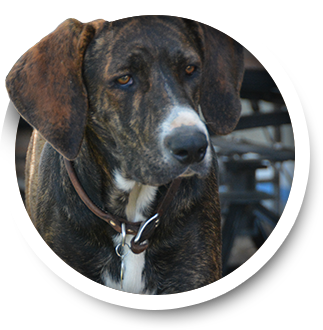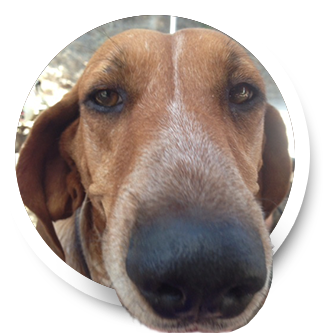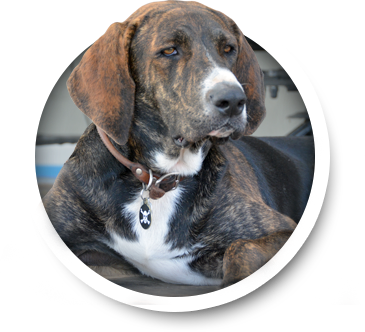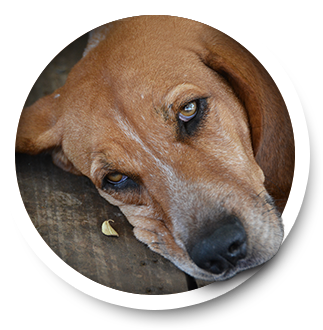Posted on 8/29/2022


Hey, Duke here and you know going to your auto repair shop is a lot like going to the veterinarian or doctors when you have an issue with your vehicle. It has to go through diagnostic tests before a solution or repair can be recommended. So I am going to give you a guide on Vehicle Diagnosis so let's get barkin'.
Modern Los Altos vehicles have several computers on board that control all kinds of things like engine functions, transmission shifts, traction control, anti-lock brakes, stability control, emissions – and on some vehicles, even steering, braking and the throttle.
Think about that for a minute – things that used to be controlled by simple mechanical connections now have electronic controls that rely on computers, software and sensors. It's no wonder that when something goes wrong with their vehicle it can be pretty complicated for Los Altos drivers to track down the source of the problem.
To help your service advisor at Allied Auto Works figure out what's wrong, your vehicle is equipped with onboard diagnostics. The Check Engine light comes on to tell you there's a problem and the engine management computer stores a trouble code. Your friendly and knowledgeable Allied Auto Works technician connects a scan tool to your vehicle's diagnostic port and retrieves the trouble codes as well as other important data.
Trouble codes are like clues for the technician to follow as he diagnoses what's wrong with your vehicle. In a way, it's like going to your Los Altos doctor with a problem. She'll run some additional tests and gather the information she needs to make a diagnosis and form a treatment plan. How much a vehicle diagnosis costs at Allied Auto Works in Los Altos depends on how much time it takes to sort out the symptoms and find the underlying problem.
Give us a call and tell them Duke sent ya.
Here is my diagnosis joke of the day for laughs,
I've just been diagnosed with Sausagephobia...
...I fear the Wurst.
DUKE

Allied Auto Works
650.968.7227
2073 Grant Road
Los Altos, CA 94024
https://www.alliedautoworks.com/
Posted on 8/22/2022

Hi Cayenne here and when my nose is aligned to a scent, I will track it and find it the way I was designed to do. When properly aligned, all of your wheels are pointed in the same direction. Your vehicle will track true and handle the way it is designed. So yes today we will bark about the signs of an alignment problem so let's get barkin' and stay on track.
Los Altos drivers often associate our wheels being “knocked” out of alignment with an event like an accident, hitting a pothole, curb, or some other object. While these can certainly take your wheels out of alignment, the bumps and bounces of everyday Los Altos driving take their toll on wheel alignment as well.
In addition, your vehicle can lose alignment over time with just normal driving. When your wheels are out of alignment, Allied Auto Works in Los Altos can return your wheels to the vehicle manufacturer’s factory settings. Most owner's manuals suggest an alignment check every year or two.
Give us a call.
I leave you with this positive thought for the day,
"Don't watch the clock, just do what it does and keep going." ~ Sam Levenson
Cayenne

Allied Auto Works
2073 Grant Road
Los Altos, CA 94024
650.968.7227
https://www.alliedautoworks.com/
Posted on 8/14/2022


Duke here and with all the driving you must have done during the summer, your tires might need to be checked. How much is enough tread on your tires? Well, today we will answer that question as we spin into this subject.
Most Los Altos drivers know that tires wear out and that the wear has to do with tread depth. Most of us have heard that “bald” tires are dangerous, but most of us picture a tire with no tread at all when we think of a bald tire. And when we take our vehicles in for preventive maintenance, the technician tells us they're need to be replaced long before all the tread is worn off. Just how much tire tread wear is too much? And how can you tell? Tires are and their condition is important to the safe handling of a vehicle, so it's for Los Altos vehicle owners to know the answers to these questions.
First of all, it's important to understand that there may be a legal limit to tread wear. If your tires are worn past this limit, you have to replace them to be in compliance with CA auto safety laws. That's why measuring your tread wear is part of a vehicle safety inspection.
In some jurisdictions, tread must be at least 1.6 millimeters or 2/32 of an inch thick. This standard has been in effect since 1968. But this standard has recently been called into question, and some CA professionals are arguing that it be changed.
The safety issue that has brought this standard under scrutiny is the ability of a vehicle to stop on a wet surface. When a vehicle has trouble stopping, most Los Altos drivers immediately look at the brakes as the source of the problem. But tires are crucial to safe stopping distances because they provide the traction required in a stop.
A tire's contact with the road surface creates traction, which allows for effective braking. On a wet surface, a tire only has traction if it can get to the road's surface. So tire tread is designed to channel water out from under the tire to allow it to stay in contact with the road. If the tire can't shift the water, then it starts to “float.” This condition is called hydroplaning. It is very dangerous for Los Altos drivers since the vehicle won't stop no matter how hard the driver presses the brakes. Steering control is also lost.
A recent study tested the stopping ability of a passenger car and a full-sized pick-up on a road surface covered with only a dime's depth of water (less than a millimeter). The vehicles were traveling at 70 mph (112 kph) when they stopped on the wet surface. At 2/32 (1.6 mm) tread depth, the stopping distance was double that of a new tire. The passenger car was still traveling at 55 mph (89 kph) when it reached the stopping distance it experienced with new tires.
Let's suppose that you're on a busy Los Altos road in a light drizzle and a vehicle stops suddenly in front of you. You just bought new tires and you brake hard, missing the vehicle with only inches to spare. If you hadn't bought those new tires, you would have crashed into that vehicle at 55 mph (89 kph). That is a major difference.
What if your tires had a tread depth of 4/32 (3.2 mm)? You would have crashed into that vehicle at 45 mph (72 kph). Still not a good situation. But it's better.
Now what if you were driving that pick-up truck? You wouldn't have missed that vehicle in the first place, and you would have crashed at higher rates of speed in both of the other scenarios. The heavier your vehicle, the longer its stopping distance. It's a matter of physics.
The results of this test has led Consumer Reports and others to ask that the standard for tread wear be changed from 2/32 (1.6 mm) to 4/32 (3.2 mm). The increased standard will improve safety on the road and save lives here in CA and nationally.
Of course, until the standard changes, you'll have to decide whether you'll be willing to replace your tires a little sooner.
You can use an American quarter to tell if your tread wear is down to 4/32 (3.2 mm). Place the quarter into the tread with George's head toward the tire and his neck toward you. If the tread doesn't cover George's hairline, you're under 4/32 (3.2 mm). With a Canadian quarter, the tread should cover the digits of the year.
You can measure the 2/32 inch (1.6 mm) tread wear with a penny. If the tread touches the top of Abe's head, it's at 2/32 (1.6 mm). Tires are super important when it comes to vehicle care. But their condition has a major impact on safety. We need to decide whether to sacrifice safety for economy. Keeping our tread wear above 4/32 in (3.2 mm) is good auto advice.
I leave you with my tire joke of the day,
I was struggling with a flat tire, and my mom came and said, "Don't worry, no pressure".
Duke

Allied Auto Works
2073 Grant Road
Los Altos, CA 94024
650.968.7227
http://alliedautoworks.autotipsblog.com
Posted on 8/7/2022


Good day Cayenne here and with school starting up in about 2 weeks, Fall with follow and that means it's time for a seasonal checkup. I know it is hard to believe that Fall is just around the corner but I thought I would give you a reminder now so your car is ready for all those school field trips now that we are trying to bring school back to what is normal from the last couple of years. So let's fall and spring into this automotive lesson today and start barkin'!
When I was a kid, my dad always made sure he took the cars in for Spring and Fall checkups. I was telling a friend that it's about time to get into Allied Auto Works for a checkup and he said that he read on the internet that modern cars don't need seasonal service.
My friend is (technically) right about some things, but from a practical standpoint, a seasonal check-up still makes sense.
Back when my dad was teaching me about how to take care of the family vehicle, most of them used a different weight of oil in the winter and in the summer. But most of today's modern engines run the same oil year round. High-tech engines and high-tech motor oils are better able to handle the seasonal changes.
Your owner's manual or Los Altos service advisor at Allied Auto Works can tell you the right oil to use.
Of course, you're concerned about the coolant or antifreeze. You don't want to overheat in the CA summer or freeze up in the winter. Your engine cooling system protects against both of these things. And modern coolant — 'antifreeze' as it's sometimes called — is up to doing both very well. It's designed to last for longer distances than most people drive in a year or two.
So how does a Spring and Fall check-up fit in? Let's start with Spring. Summer is coming. That means heat, more driving, and road trips. It just makes sense to check your fluid levels and do a visual inspection to see that everything is up to snuff.
You may not be scheduled to drain and replace the coolant for some time, but you need to make sure you have enough coolant and that you don't have any leaks or hoses that are about to fail.
That's pretty practical: a check-up to see if there are any problems or emerging conditions that could later become a problem, like a cracked belt.
And the same principle applies for getting ready for winter. Cold weather means lots of failed batteries. It takes more power to crank up a cold engine, and cold also decreases the available cranking power the battery has available.
So a battery test in the Fall could tell you if you've got a battery that is running on its last legs. And of course, if you live where winter temperatures get below 45 degrees F (7 degrees C) or you have ice and snow, you'll want to consider changing to winter tires.
So Spring and Fall auto checkups at Allied Auto Works are practical reminders to get ready for the demands of the hot and cold seasons to come.
And odds are that you have one or more routine services that are due anyway. Like a transmission service, brake or power steering fluid, differential service — stuff like that. Are your wiper blades still good? Are your headlamps starting to dim?
So Spring and Fall, change your clocks, replace the batteries in your smoke detectors and get a check-up for your cars.
See, dad was right again (Cayenne too)
Come and see us at Allied Auto Works for your Spring and Fall automotive checkup.
I leave you with this proverb, "Autumn is the season of change." ~Taoist proverb
Cayenne

Allied Auto Works
2073 Grant Road
Los Altos, CA 94024
650.968.7227
https://www.alliedautoworks.com/